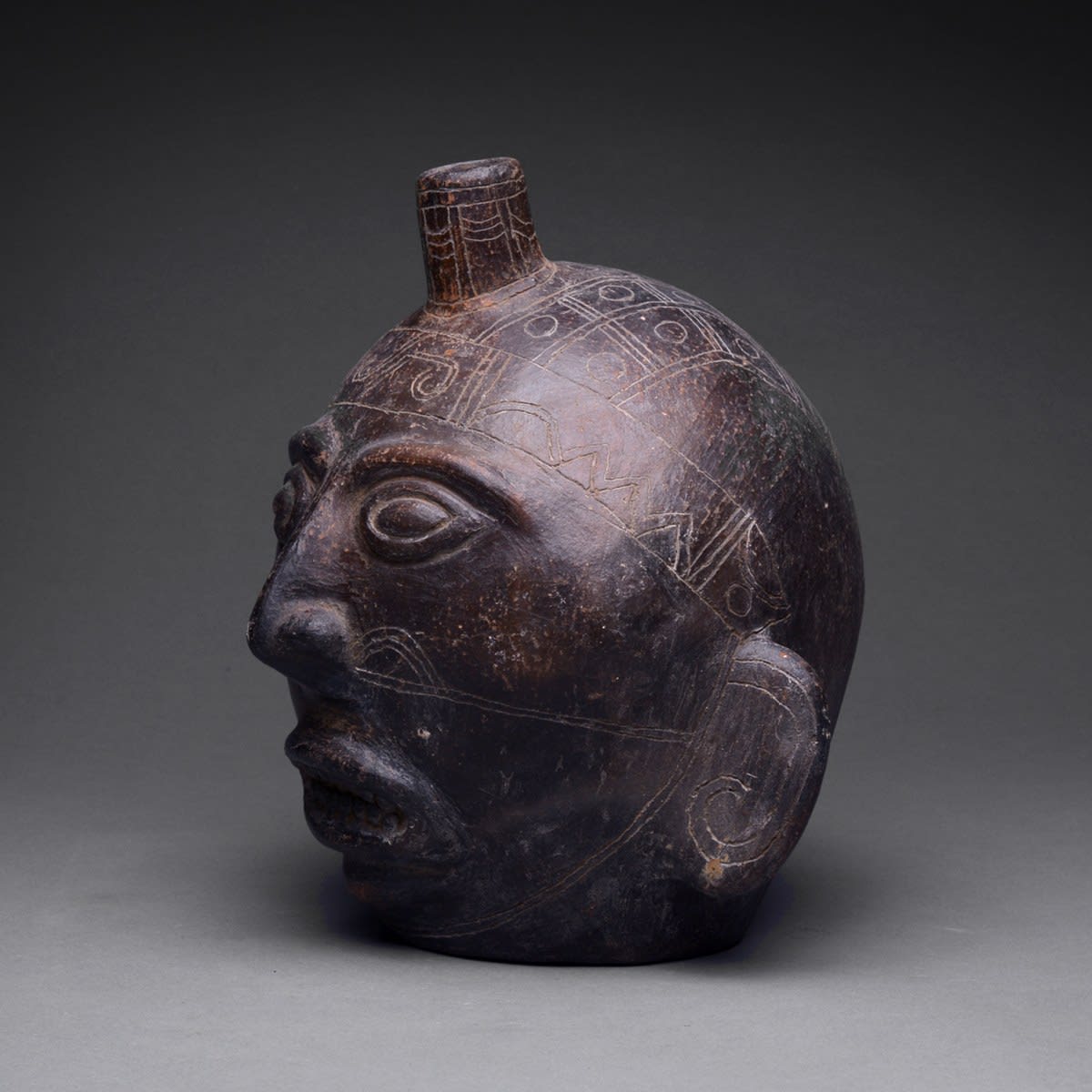Blackware Trophy Head, 300 BCE - 300 CE
Terracotta
height 25.4 cm
height 10 in
height 10 in
PF.4222
Further images
To the Costa Ricans, human head effigy vessels represented a prisoner of war or a sacrificial victim. These vessels are known as trophy heads. The artist's craftsmanship captures the realistic...
To the Costa Ricans, human head effigy vessels represented a prisoner of war or a sacrificial victim. These vessels are known as trophy heads. The artist's craftsmanship captures the realistic nature of this piece. The artist took considerable time to depict the exactness of this victim. The face is very distinguished and carefully decorated. This masterpiece has a deep grayish-brown color. The tribal scarification or facial tattooing is etched onto the clay. The engravings are geometrical in design and the frankness of the patterns are very eminent to the rank of this warrior. This repetitious pattern design of squares with circles in the inside covers the entire back of the head. The forefront of the head is a spout-like opening. Perhaps they used this vessel for burning incense or carrying seeds. However, it is not the most functional in design. The eyes are almond shaped and set deep within the eye sockets. The nose is aquiline and indicative of Costa Rican features. The most poignant feature is the mouth. The lips are pulled back displaying a full set of teeth. This expression can be closely compared to when one grinds their teeth together in rage and anger. This effigy head is able to give us some insight to the fears and the pride of the people from this ancient culture. It is an incredible example of the talents from the Costa Rican artists.







